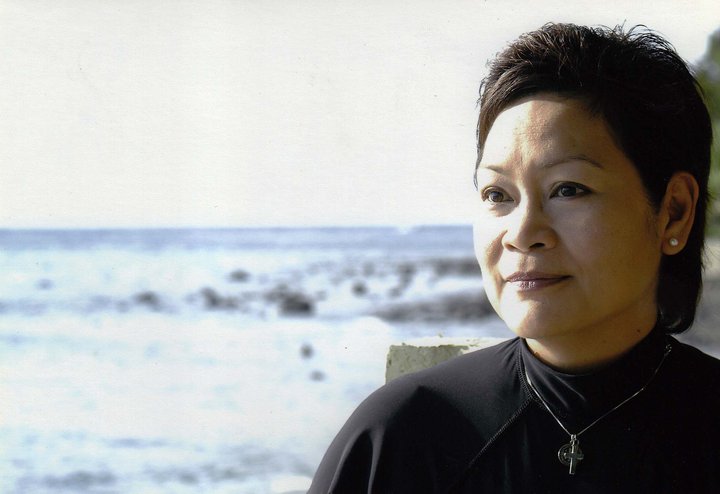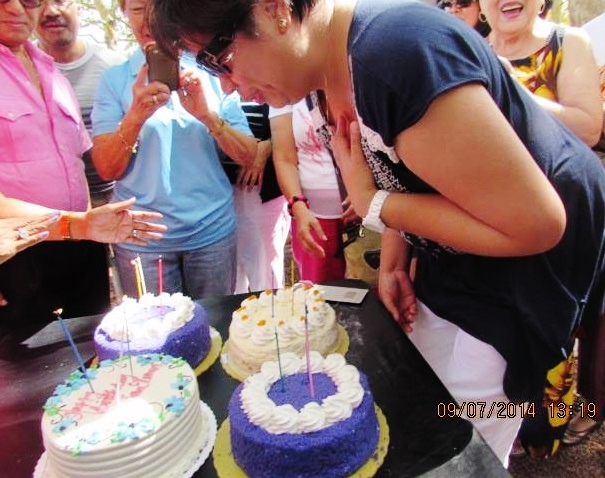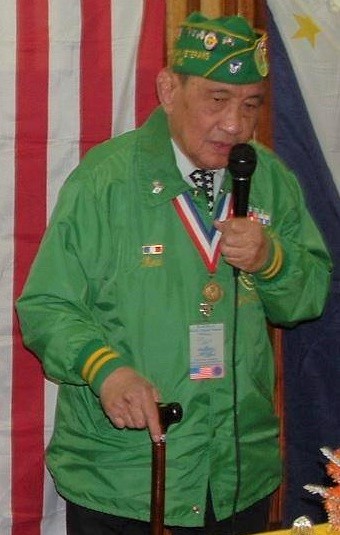Guerrilla fighter Capt. Jose Red, 83
By Nestor EnriquezThe Captain had fallen on January 4, 2018 in his hometown in Catanduanes province in the Philippines’s Bicol region.
Jose Red, the World War II guerrilla fighter and Knights of Rizal Jersey City Chapter founding father, was a longtime Jersey City resident. He is proud of his participation in Los Banos raid, one of the greatest rescue missions in World War II history. Sir Jose Red is survived by his children Charles, Grace, Lorna, Nelson, Larry, Maribel, and Joshua now residing in Valley Stream, New York.
Red was not yet a soldier when the war broke out in the Philippines on December 8, 1941. Upon hearing that his father was among the Death March prisoners, he joined the underground at a young age. He was told by members of his father’s Philippine Constabulary unit that his father survived Bataan and was going to be discharged in Cabanatuan. That was the last thing he heard.
At the time, the Bicol resistance was headed by the Wenceslao Vinzons. Vinzons was captured by the Japanese on July 8, 1942. He refused to pledge his alliance to his captors. He was bayoneted to death at the age of 31. His father, wife, sister and two of his children would also be killed after a week. This did not discourage Virac-born Red as he continued to fight for the resistance and became one of the top ranking officers at the age of 17 in the Bicol Peninsula. His only fear was the Japanese might persecute his parents.
His first combat engagement was the successful raid of the Japanese Coal Mine in Panganiban, Catanduanes in June. The mine was guarded by about 10 Japanese soldiers. He opened the supply warehouse or ‘bodega,’ and distributed the rice for the barrio folks. The place has the richest deposit of coal in the island even today.

Red at a community gathering attended by then Consul Zaldy Patron (second from left) and Linda Mayo (standing at center), founder of the Pan American Concerned Citizens Action League, an organization that advocates for Filipino veterans.
His promotion was fast, attributed to his skills as an intelligence operative. He remembered some of his men, a Captain Barros, head of Southern Tagalog and one Carbonel of Naga, Camarines Sur. Acting on a tip, Red’s group ambushed and captured a Japanese general surnamed Tanaka in a daring train engagement. His reports would reach the Allied Intelligence Bureau which supported the forces of General Douglas MacArthur via coded wireless radio and various improvised communication network.
Captain Red was not shy about the number of Japanese soldiers he had killed. A dozen, he claimed at the time.
He would tell us about the ‘agimat’ that may have saved his life.
On a rainy cold night in the mountain of Sierra Madre, he saw an old monk and approached him. He was freezing under the tree. The monk gave him a red liquid to drink. His body felt warm all over. He walked toward a brook where he saw a small stone. He took the mysterious stone and carried it with him till the end of the war. It would be his lucky charm. He remembered the old monk saying the stone will be lost when he had no need for it anymore. When the war ended, Red could not find the magical stone, also known as ‘agimat.’ He carried it with him –together with a rosary that hung around his neck – wherever he went.
Red was part of the spy network that provided critical intelligence to the Los Banos rescue of 1945. It was a risky mission to free an estimated 2,000 prisoners of war inside the compound of the University of the Philippines- Agricultural College in Los Banos. The mission was successfully carried out with speed and precision.
He saw his father still alive for the first time since Christmas of 1941. His mother quickly noted that Red, as a Captain, had outranked his old man. She jokingly ordered the father who survived the Bataan Death March to salute his son who was born on December 24, 1925.
Jose Red went to Manila to study using the Philippine Equivalent of G.I. Bill. He was accepted to UST pre-med program but forced later to shift to Commerce. He became an accountant for Sampaguita Pictures, a film company that produced war movies in 1946.
This essay by Nestor Enriquez first appeared on Facebook and is being republished with permission.
© The FilAm 2018













